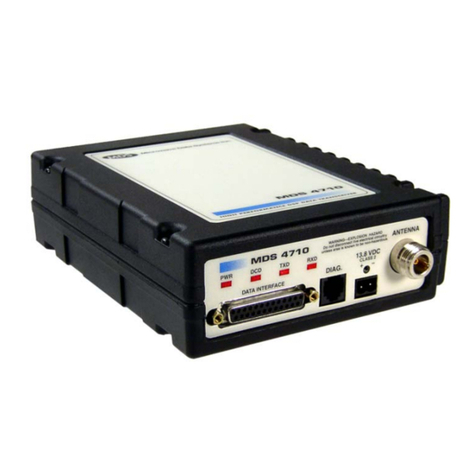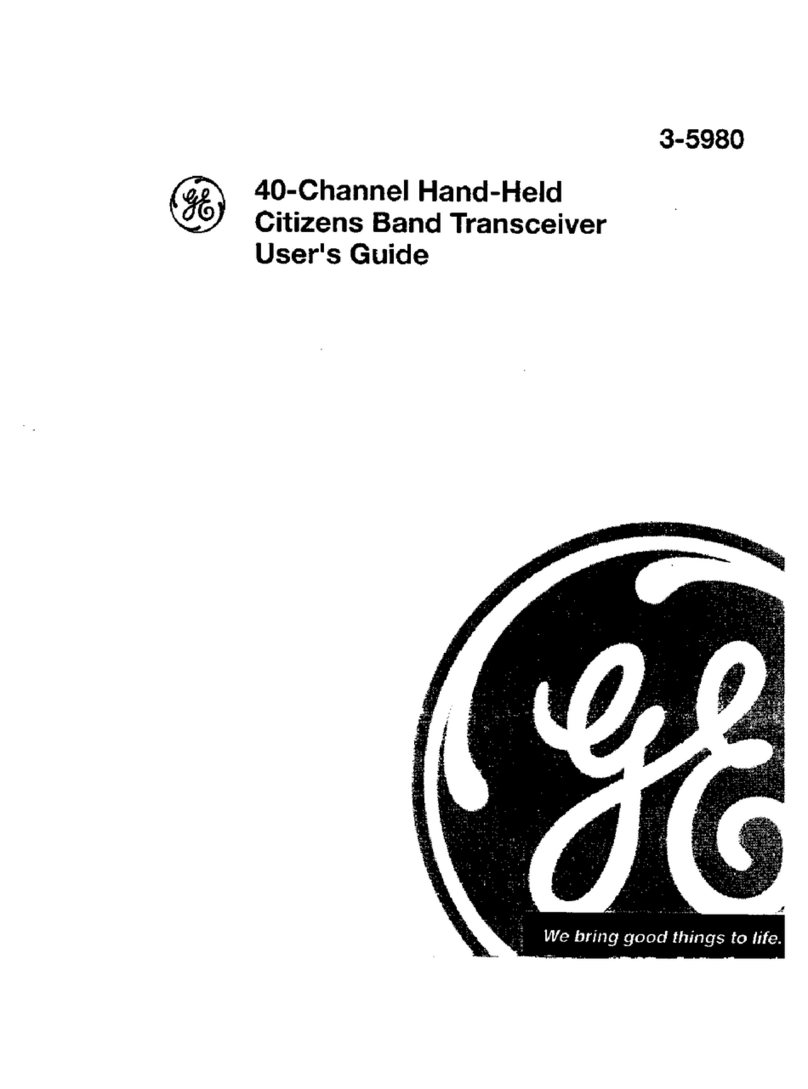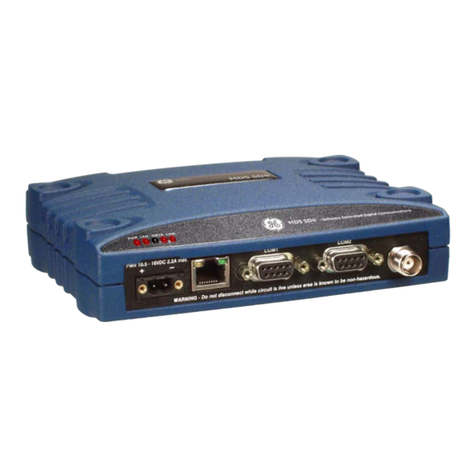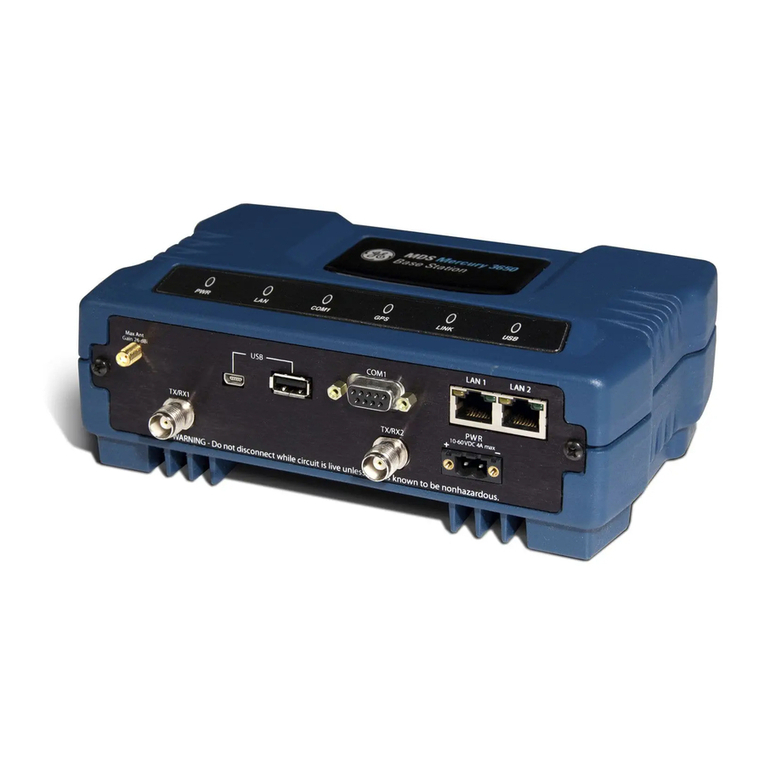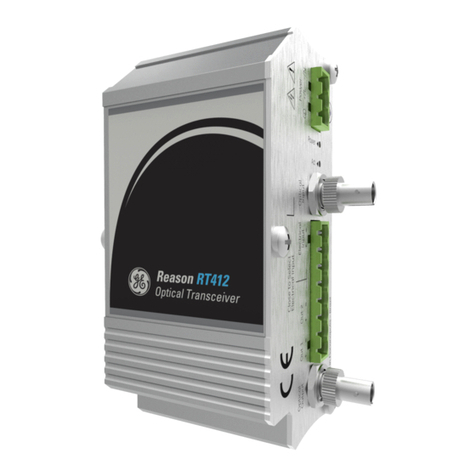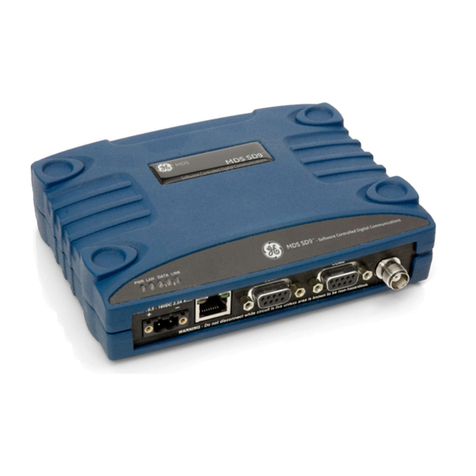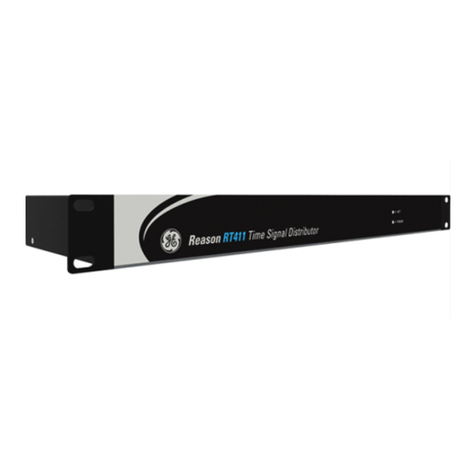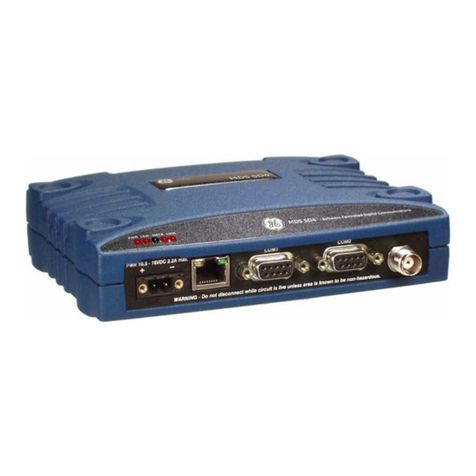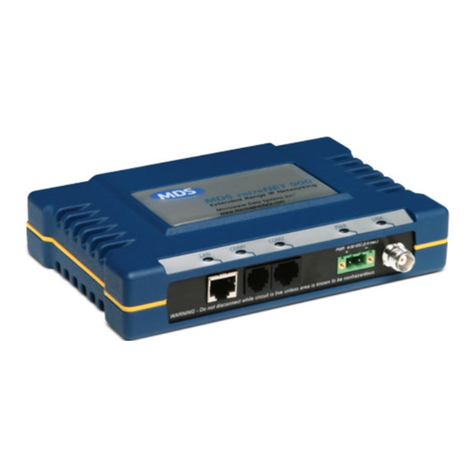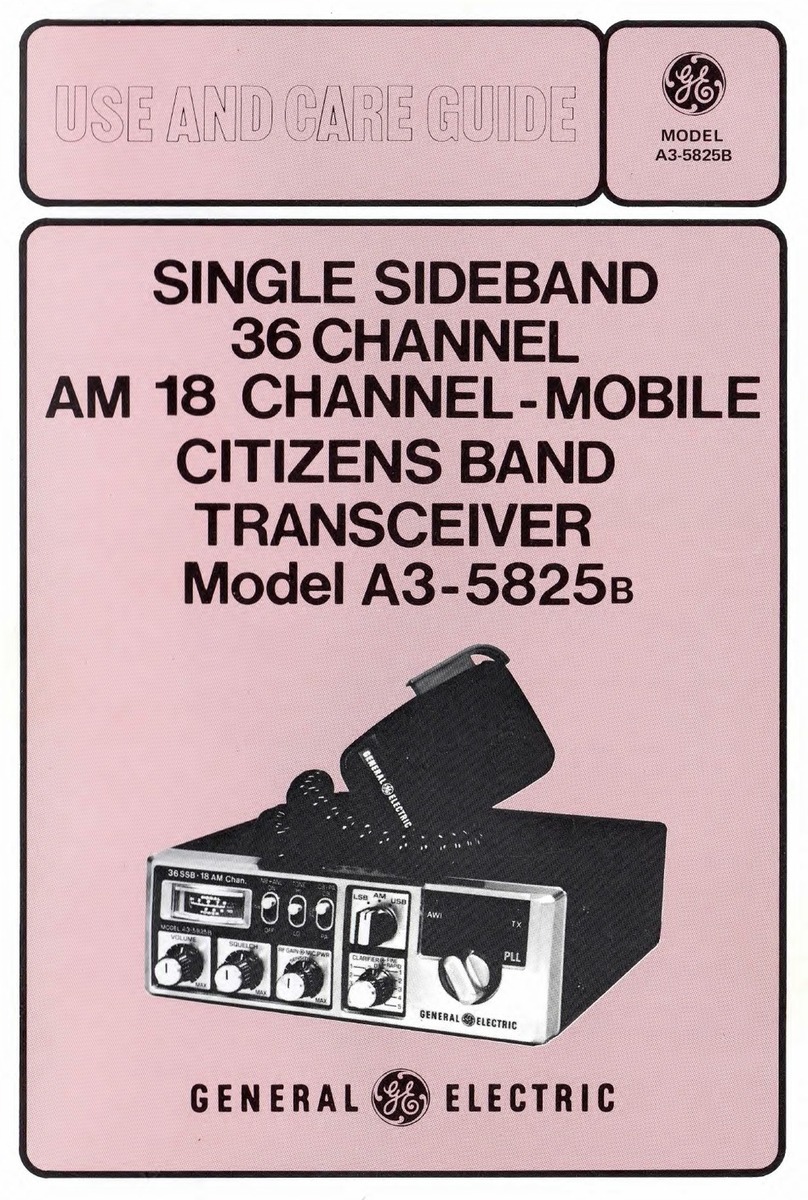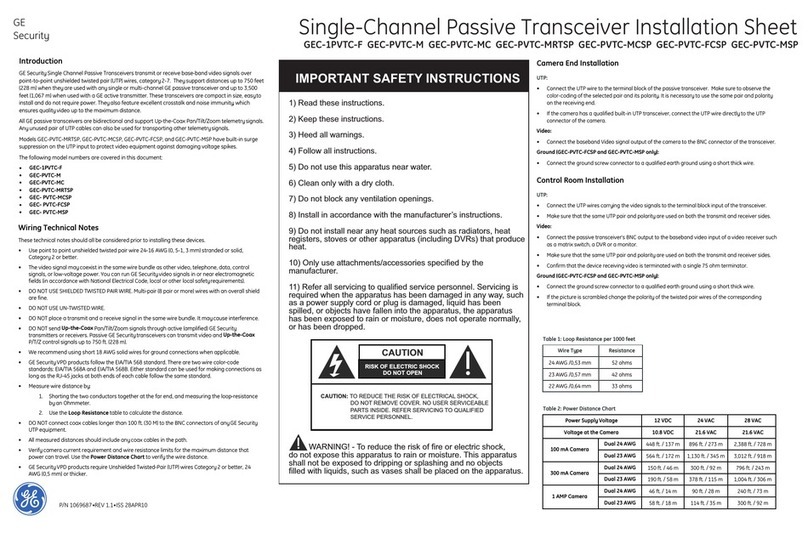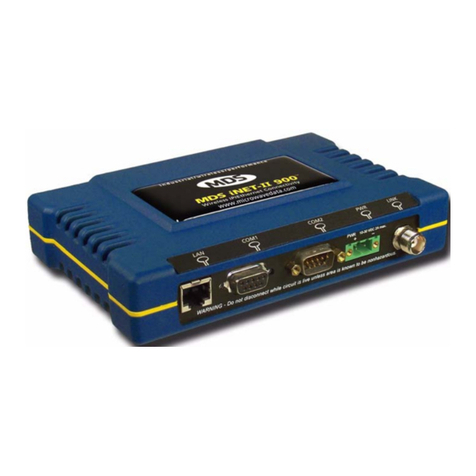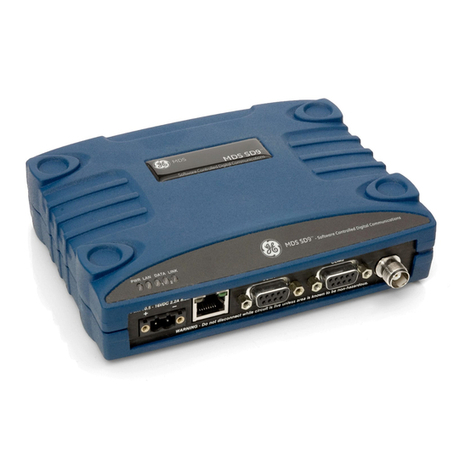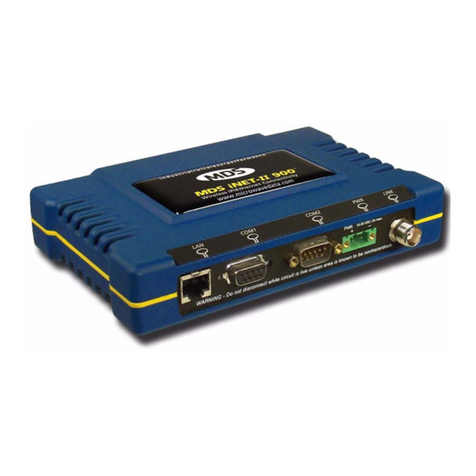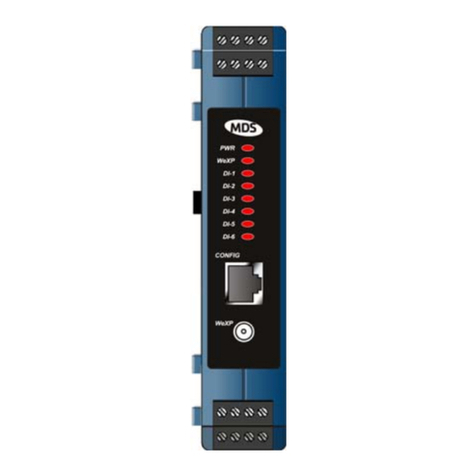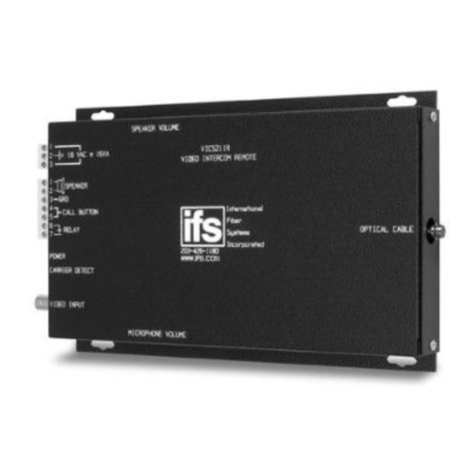
05-4819A01, Rev. 08 LCT 450 Installation/Operation Guide
5
Using screws longer than 1/4 inch (6 mm) to attach the
bracket to the radio may damage the internal PC board.
Use only the supplied screws.
Install the antenna and feedline
for the station. The antenna
used with the transceiver must be designed to operate in the
radio’s frequency band, and be mounted in a location that pro-
vides a clear path to the other associated station(s). Use low loss
coaxial feedline and keep the cable as short as possible.
3.
Connect the data equipment
connec-
tor. Check P1 CONTROL INTERFACE on Page 24 for pin wiring
details.
NOTE:
port is used for entering configuration
commands and reprogramming the radio’s firmware.
4.
Connect primary power to the transceiver.
Power applied must
be 13.6 Vdc (+/- 15%) and capable of providing at least 8
Amperes of continuous current. A power connector with is pro-
vided with each unit (see Figure 4).
The transceiver is designed for use with nega-
tive-ground systems only. The power supply should be
equipped with overload protection (NEC Class 2 rating),
to protect against a short circuit between its output ter-
minals and the radio’s power connector.
This completes the installation of the transceiver.
SOFTWARE COMMANDS
Table 1 lists software commands commonly used during configuration
of the transceiver. In many cases, no changes or settings will be
required, as the radio is typically supplied ready for operation from the
factory. These commands are provided in the event future changes are
needed, or to facilitate troubleshooting of the unit.
These commands require a PC to be connected to the transceiver as
explained in the following steps:
1. Connect a PC to the transceiver’s
P2
connector as shown in
Figure 6. If desired, a connecting cable may be assembled using
the information shown on Page 26.
CAUTION
POSSIBLE
EQUIPMENT
DAMAGE
CAUTION
POSSIBLE
EQUIPMENT
DAMAGE
